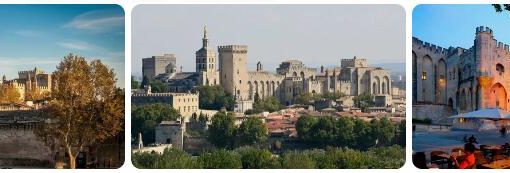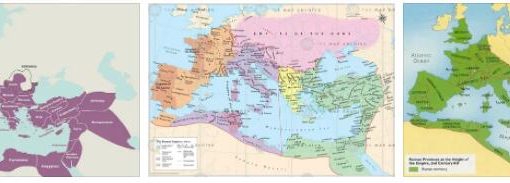The center-left is the formula of agreement between the DC and the PSI for a reform program capable of correcting new and old imbalances in Italian society. The first center-left government was launched in 1962, after an attempt by the right-wing forces to stop the socialists from entering the government area with F. Tambroni. The latter, who became president of the council with votes, as well as the DC, the liberals and the neo-fascists, was forced to resign after the outbreak of serious disorders in Genoa and other cities (July 1960). The DC launches the center-left line under the leadership of A. Moro and A. Fanfani, who forms the first government with the parliamentary support of the socialists, during which the electricity industry is nationalized and compulsory education is extended to 14 years.
In 1963 Moro formed the first government with the direct participation of the PSI, which did not have an easy life not only due to the opposition of the Christian Democratic right and the left of the PSI (which in 1964 gave birth to the PSIUP), but also due to the difficulties of economic recession. The government fell in July 1964, but the center-left won a victory with the election as president of the Republic of G. Saragat, the social democratic leader who succeeded A. Segni who, elected in 1962, resigned for health reasons, after having proved himself a strong opponent of the opening on the left. In the two subsequent center-left governments led by Moro, relevant measures are approved on economic planning, regional law, public health, which however collide with the lack of technical means, financial and administrative necessary for their full implementation, revealing the structural limits of the reform process. His very cautious character is not enough to overcome the fears of the more conservative circles. There is a trend towards clandestine and illegal action for subversive purposes which has support within the very institutions of the state. In 1964 G. De Lorenzo, commander general of the Carabinieri, former head of the Information Service of the Armed Forces (SIFAR), implemented measures for a possible military coup (Solo plan). The scandal of the involvement of the secret services in subversive plots comes to light in 1967 and provokes strong reactions in public opinion.
According to holidaysort.com, political elections take place in May 1968. The results, favorable to the DC and the PCI, are disappointing for the socialists. But the center-left has no alternatives and maintains itself as a government formula, emptied of any innovative thrust, precisely at the moment when the numerous unsolved problems come to the surface. These provoke a wave of serious political and social tensions, inserted in a more general process of mobilization that involves a large part of Western countries. In Italy the student protest is combined with the workers’ protest. In 1968-69 there were continuous demonstrations culminating in the occupation of universities and an unprecedented wave of strikes, accompanied by violent clashes with the police. The workers’ struggles achieve important objectives: the adjustment of Italian wages to the European average and, in 1970, the approval of the Workers’ Statute. The ruling class shows itself unprepared to face the new climate. Conservatives are clamoring for a ‘strong government’ to put an end to the unrest, while attacking the politics of recent years, accused of having opened the doors to social revolution. In December 1970 divorce was introduced into the Italian legal system. The parliamentary process that led to the approval of the law (1969) was long and controversial and saw the widespread mobilization of the Radical Party, which has since been increasingly committed to the defense of human and civil rights.
Right-wing subversive forces, with the complicity of part of the secret services, weave ‘black plots’ against the Republic. In December 1969, numerous bomb attacks culminated in the massacre of the National Bank of Agriculture in Piazza Fontana, Milan, marking the beginning of the ‘strategy of tension’. Not only the subversive right-wing circles – which in 1970 fomented a popular uprising in Reggio di Calabria – but also that part of the extreme left which believes the conditions for a proletarian revolution are maturing in Italy Red terrorism, which takes on the face of kidnapping and political murder, created an increasingly dramatic situation in the country in the 1970s. Among its organizations, the Red Brigades (BR), born in 1970, stand out.
The Christian Democrat G. Leone is elected President of the Republic (1971), with the decisive votes of the Italian Social Movement (MSI). The first early elections in republican history, in 1972, were followed by a centrist government led by G. Andreotti and two governments led by M. Rumor, which adopted measures to combat inflation and the effects of the energy crisis following the Arab-Israeli war of 1973. In the autumn of 1973 the secretary of the PCI, E. Berlinguer, launches the so-called line of the ‘historical compromise’ between communists, socialists and Christian Democrats which should lead to the formation of a government capable of opposing subversive pressures and opening a new reform process. Berlinguer’s privileged interlocutor in DC is Moro. The Christian Democrat leader believes that the time has come to give the country a new political course, but the resistance within his party is strong. All the more so since the processes of change set in motion by modernization – and by the contestation since 1968 – have deeply alarmed the Catholic world, as demonstrated by the battle against divorce, fought strenuously and lost by Catholics in 1974, with the defeat suffered in the country’s first abrogative popular referendum. ● The administrative elections of 1975 and the politics of 1976 see a significant advance of the PCI. A single-color DC government led by Andreotti is based on an unprecedented basis: the ‘no mistrust’ not only of the traditional allies, but above all of the Communist Party, which in a moment of particular gravity for the country, faced with a severe economic crisis and the challenge of terrorism, he chooses the path of collaboration. In November 1977 the Communists asked for the constitution of a government of national unity made up of all the parties of the constitutional arc. Upon the refusal of the DC, conditioned by the veto of the United States, the PCI declares its willingness to enter the parliamentary majority.
In 1978, the new single-color government chaired by Andreotti with the support of the PCI, in the formula defined as ‘national solidarity’, also represents a response to the kidnapping of Moro and the killing of the five agents of his escort in Rome (March 16 1978) by the Red Brigades. During his imprisonment, which tragically ends with the murder of Moro (9 May), political forces and public opinion are divided on the attitude to be taken towards the kidnappers. The DC and the PCI exclude any negotiations with the terrorists, denying them the dignity of political interlocutors; the socialists, along with other minor forces such as the radicals, argue the need for greater flexibility to save the hostage’s life. The election of the Socialist S.




